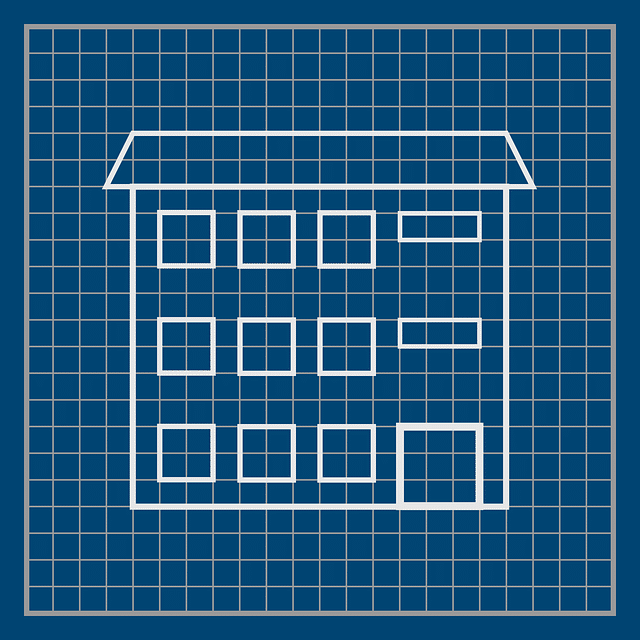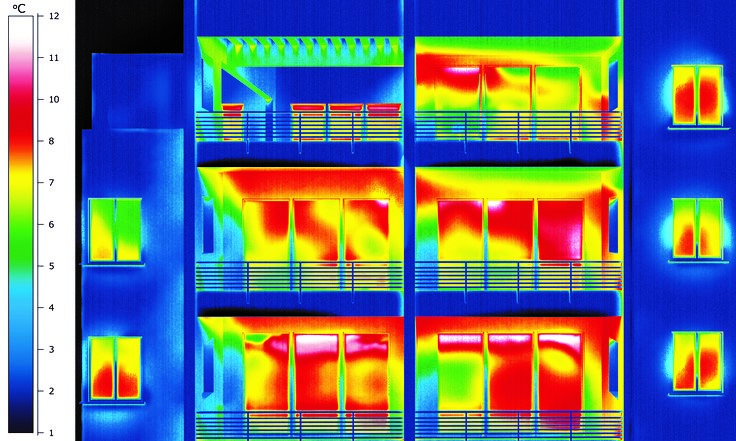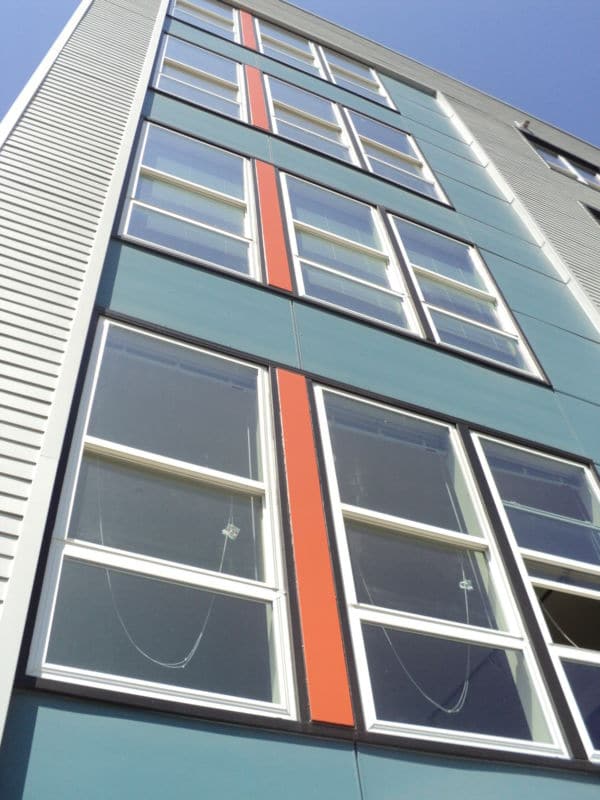Forensic Building Exterior Envelope Consulting Service
Building Envelope Inspection

- Multi-Family
- Commercial Buildings
- Mixed Use
- Hotels
- Apartments
- Condominiums
- Townhomes
- Row Homes
- Senior Living Facilities
- High Rise
- Residential
- Water Intrusion Repair Specialists
- Building Envelope Inspections
- Exterior Building Inspection
Pacific Exteriors NW specializes in apartments, condominiums, townhomes, commercial and mixed-use, and luxury residential exterior building envelope inspections, consulting, and renovations in the greater Portland metro and surrounding areas.
Pacific Exteriors NW has over 25 years of experience. Our team consists of some of the nation’s foremost accredited experts concerning building waterproofing, exterior envelope design and depiction, exterior building envelope repair, Building Envelope Inspections, Exterior Building Inspections, and the comprehensive staging and elements required on Pacific Northwest homes, multifamily and commercial buildings.
![]() Our building envelope consulting services cover the entire Pacific Northwest as we have extensive experience in working with many different capital investors, portfolio and community managers, apartment owners, condominium and townhome owners, and commercial building property owners who are experiencing or have been dealing with lack of maintenance, dry rot issues, faulty or poor installation aspects, construction defects, or water intrusion issues.
Our building envelope consulting services cover the entire Pacific Northwest as we have extensive experience in working with many different capital investors, portfolio and community managers, apartment owners, condominium and townhome owners, and commercial building property owners who are experiencing or have been dealing with lack of maintenance, dry rot issues, faulty or poor installation aspects, construction defects, or water intrusion issues.
Water intrusion and dry-rot damage cause millions of dollars of property damage and insurance claims annually. Based in Portland, Oregon, Pacific Exteriors NW is a qualified water intrusion expert to oversee the design and construction of the building’s exterior envelope. With our team performing site visits and building envelope inspections, we can identify areas of concern and provide corrective measures and recommendations. Our firm uses cutting-edge technology like temperature-based forensic infrared thermal imagery and our L2-trained expert team to uncover water intrusion issues and hidden decay and damages. Our inspection process focuses on isolating the building defects and recommended repair protocol.
Can We Perform Inspections?
Pacific Exteriors NW provides inspection services in the following situations:
- Commercial Exterior Inspections
- Exterior Envelope Inspections
- Due Diligence Inspections
- Building Envelope Inspections
- Multifamily Siding Inspections
- Apartment Siding Inspections
- Commercial Building Siding Inspections
- Exterior Building Inspections
- Building envelope Inspections
We have the knowledge and experience to know where to look for damage and potential water intrusion. We have worked with enough homes and commercial buildings here in the Pacific Northwest to understand where and how water gets into or under the siding or exterior envelope of buildings.
Pacific Exteriors NW has provided support and helped many homeowners, community management groups, property management firms, HOA boards, and committees, from holding seminars to remediation outline and execution of necessary repairs due to moisture intrusion, building design flaws, and construction defects.
We are the go-to construction company for exterior building envelope repair.
Water Intrusion Experts
 Pacific Exteriors NW is often called upon for capital improvements, rehab, exterior building envelope repair, construction defect repair, and remediation from many insurance companies, property owners, investors, architects, attorneys, and real estate agents. We provide reports that can assist in determining if the purchase is fiscally intelligent and a sound investment due to capital improvements, maintenance, and building envelope rehab and repair costs. Leaking windows and doors, siding installed without a moisture barrier, high moisture content in the walls, dry rot evident, flashing omitted in critical detail areas, seals fogging up, and discoloration to cladding are all common telltale signs of more widespread issues and building flaws.
Pacific Exteriors NW is often called upon for capital improvements, rehab, exterior building envelope repair, construction defect repair, and remediation from many insurance companies, property owners, investors, architects, attorneys, and real estate agents. We provide reports that can assist in determining if the purchase is fiscally intelligent and a sound investment due to capital improvements, maintenance, and building envelope rehab and repair costs. Leaking windows and doors, siding installed without a moisture barrier, high moisture content in the walls, dry rot evident, flashing omitted in critical detail areas, seals fogging up, and discoloration to cladding are all common telltale signs of more widespread issues and building flaws.
In Portland, Oregon, Vancouver, Washington, and other surrounding cities in the Pacific Northwest, Pacific Exteriors NW has performed thousands of multifamily, commercial, and residential inspections over the years. We have assisted thousands of property owners in discovering and repairing hidden issues from new build issues to construction defect repair, older distressed multi-family or commercial properties where capital investment and return are key, or even due diligence to understand the property before selling or purchasing an apartment or commercial or mixed-use buildings. We will create and provide the necessary information for you to correct the water intrusion issues and can provide architectural design and engineering for any necessary repairs.
Our experienced and professional staff is here to handle these services and help your property with:
- Water Intrusion, Damage, Dry-rot inspections
- Construction Claims and Litigation
- Building Maintenance Inspection
- Mixed-Use Building Inspection
- Insurance and Warranty Inspection
- Building Code Research & Analysis
- Destructive Testing (D.T)
- First Party Insurance Claims and support
- Expert Witness Testimony and Forensic Consulting
- Construction Defect Investigation and Analysis
- Thermal Imagery
- Plaza and Waterproof Deck Inspections
- Property Conditions/Damage Assessment
- Exterior Building Envelope Inspections
- Exterior Building Envelope Repair
- Design Build Details
- Structural Engineering
- Value Engineering
- Exterior Building Inspections
- Building Envelope Inspections
- Project Oversight
- Roof Inspection
- Water Leak Diagnosis
- Asbestos/Lead Paint Testing
- Hazardous Material Analysis
- Reserve Study Projections
Some of the larger local communities where we provide our exterior envelope consulting and design-build services for the state of Washington are Battle Ground, Camas, Kelso, Longview, Washougal, Vancouver, and many other local areas, as well as the coastal towns.
Some of the larger local communities we provide our exterior envelope consulting and design-build services for the state of Oregon are Aloha, Beaverton, Bend, Canby, Clackamas, Cornelius, Damascus, Eugene, Fairview, Forest Grove, Forest Heights, Gresham, Happy Valley, Hillsboro, Lake Oswego, McMinnville, Milwaukie, Newberg, Oregon City, Portland, Salem, Scappoose, Sherwood, St Helens, Tigard, Troutdale, Tualatin, West Linn, Wilsonville, Woodburn, and many other local areas as well as the coastal towns.
Pacific Exteriors NW is also very familiar with the many different builders in each community or municipality and their common defects and poor workmanship of the wall assembly. Warranty claims, forensic investigation measures, inspections, and non-invasive or destructive testing on the exterior cladding and building envelope are all aspects we provide. They can help assist with the remediation of repairs, oversight, construction defects, water intrusion, and building flaws. Pacific Exteriors NW building envelope consulting services cover the entire Pacific Northwest as we have extensive experience in working with many different capital investors, portfolio and community managers, apartment owners, condominium and townhome owners, and commercial building property owners that are experiencing or have been dealing with lack of maintenance, dry rot issues, faulty or poor installation aspects, construction defects, or water intrusion issues.
Here in the greater Portland metro and surrounding areas, Pacific Exteriors NW provides our clients with custom design ideas, the highest quality material specifications, architectural flashing details, proper waterproofing assembly, premium workmanship, and superior customer service, all done at an affordable cost with integrity. With our oversight and documentation process, we have seen favorable results to our client’s budget and the actual project cost under budget. Pacific Exteriors NW also provides our clients with a comprehensive portfolio upon completion for a resale benefit that includes pictures, documentation, and scope entailment. We follow strict specifications for safety, staging, and insurance regulations and have the highest standards for communication with a project manager on-site for every project we do.
Pacific Exteriors NW architectural services and expert team rebuilds communities due to existing dated and failing conditions, construction defects, water intrusion, or defective materials like the LP (Louisiana Pacific) or failing Masonite siding from the late 1980s, and 1990s, EIFS or DRYVIT synthetic stucco, to the CertainTeed Weatherboards fiber-cement siding that is shrinking and buckling, causing extensive damages and product failure on properties typically constructed or resided from 2005-2013. Moisture issues have been documented in newer and older homes, multi-family buildings, condominiums, apartments, duplexes, townhomes, hotels, HOA communities, and commercial buildings with even mixed-use new build defects or new construction problems and builder disputes over faulty materials.
The following information is from articles and references on water, air, and thermal envelope:
The building envelope is all of the elements of the outer shell that maintain a dry, heated, or cooled indoor environment and facilitate its climate control. Building envelope design is a specialized architectural and engineering practice area that draws from all areas of building science and indoor climate control.
The many functions of the building envelope can be separated into three categories:
- Support (to resist and transfer structural loads)
- Control (the flow of matter and energy of all types)
- Finish (to meet human desires on the inside and outside)
The control function is at the core of good performance and, in practice, focuses, in order of importance, on rain control, air control, heat control, and vapor control.
Water Vapor Control
Control of rain is fundamental, and numerous strategies exist, namely, perfect barriers, drained screens, and mass/storage systems.
One of the primary purposes of a roof is to resist water. Two broad categories of roofs are flat and pitched. Flat roofs slope up to 10° or 15° but are built to resist standing water. Pitched roofs are designed to shed water but not resist standing water, which can occur during wind-driven rain or ice damming. Typically, residential, pitched roofs are covered with an underlayment material beneath the roof covering material as a second line of defense. Domestic roof construction may also be ventilated to help remove moisture from leakage and condensation.
Walls do not get as severe water exposure as roofs but still leak water. Types of wall systems regarding water penetration are barrier, drainage, and surface-sealed walls. Barrier walls are designed to allow water to be absorbed but not penetrate the wall and include concrete and some masonry walls. Drainage walls allow water that leaks into the wall to drain out, such as cavity walls. Drainage walls such as rain-screen and pressure equalization wall systems may also be ventilated to aid drying. Sealed surface walls do not allow water penetration at the exterior surface of the siding material. Most materials will not remain sealed over the long term, and this system is minimal. Still, ordinary residential construction often treats walls as sealed-surface systems relying on the siding and an underlayment layer, sometimes called house wrap.
Moisture can enter basements through the walls or floor. Basement waterproofing and drainage keep the walls dry, and a moisture barrier is needed under the floor.
Air Control
Main article: Air barrier
Control of airflow is important to ensure indoor air quality, control energy consumption, avoid condensation (and thus help ensure durability), and provide comfort. Control of air movement includes flow through the enclosure (the assembly of materials that perform this function is termed the air barrier system) or through components of the building envelope (interstitial) itself, as well as into and out of the interior space, (which can affect building insulation performance significantly). Hence, air control includes the control of wind washing (cold air passing through insulation) and convective loops, which are air movements within a wall or ceiling that may result in 10% to 20% of heat loss alone.
The physical components of the envelope include the foundation, roof, walls, doors, windows, ceiling, and their related barriers and insulation. The main factors determining the effectiveness and durability of the building enclosure system are the dimensions, performance, compatibility of materials, fabrication process, details, connections, and interactions.
Standard measures of the effectiveness of a building envelope include physical protection from weather and climate (comfort), indoor air quality (hygiene and public health), durability, and energy efficiency. To achieve these objectives, all building enclosure systems must include a solid structure, a drainage plane, an air barrier, a thermal barrier, and may include a vapor barrier. Moisture control is essential in all climates, but cold and hot-humid climates are incredibly demanding.
Thermal Envelope
The thermal envelope, or heat flow control layer, is part of a building envelope but may be in a different location, such as a ceiling. The difference can be illustrated by understanding that an insulated attic floor is the primary thermal control layer between the inside of the house and the exterior. At the same time, the entire roof (from the surface of the shingles to the interior paint finish on the ceiling) comprises the building envelope.
Building envelope thermography involves using an infrared camera to view temperature anomalies on the interior and exterior surfaces of the structure. Analysis of infrared images can help identify moisture issues from water intrusion or interstitial condensation.
The main physical problem is water infiltrating into buildings’ exterior building envelope (walls and roofs), usually through a weather barrier (e.g., building paper or air barrier membrane) designed to prevent water drops from passing through but allow water vapor through. However, problems in design, installation, and damage during construction can allow water to penetrate the walls. This causes rot and delamination of exterior wall cladding and sheathing, rusting in metal wall studs, rot in the wood structure, saturation of batt insulation, and development of mold and spores inside the walls and building interior. The construction failures ranged from minor to significant failures of the structural integrity of the building. Some buildings became unhealthy for occupants. Most of these buildings are low-rise, 3-4 story buildings constructed of wood-frame construction, some with steel, concrete, and metal stud construction types, including high rises.
The individual owners of the condominium units own most buildings that have experienced these problems in B.C. However, commercial properties and public schools have also been impacted. Many of the properties are homeowners who have been faced with correcting a problem they did not create nor by a contractor they had hired; they purchased the units either from a previous owner, a developer, or a developer/contractor. Typical repair costs are in the tens or even hundreds of thousands of dollars, resulting in significant hardship, bankruptcies, and lawsuits against the developers, contractors, architects, and others involved in the original construction and maintenance of the buildings.
Approximately 45% of the 159,979 condominium strata units and 57% of the 700 school buildings constructed in B.C. between 1985 and 2000 were found to have envelope leak problems. It was reported in 2002 that 90% of 3-4 story units built have severe problems and that some have undergone envelope repairs twice and thrice. In 2008, it was estimated the cost to repair the damage to schools alone would be nearly $400 million.
Pacific Exteriors NW has performed thousands of commercial and residential inspections. We have assisted thousands of property owners here in the Pacific Northwest in discovering and repairing hidden issues from new build issues to construction defect repair, older distressed multi-family or commercial properties where capital investment and return is key, or even due diligence to understand the property before selling or purchasing an apartment or commercial or mixed-use building.
Oregon State Areas of Service
- Beaverton, Oregon Siding Repair and Replacement Contractor
- Beaverton, Oregon Leading Apartment Siding and Exterior Building Experts
- Bend, Oregon Siding Repair and Replacement Contractor
- Canby, Oregon Siding Repair and Replacement Contractor
- Clackamas, Oregon Siding Repair and Replacement Contractor
- Clackamas, Oregon Leading Apartment Siding and Exterior Building Experts
- Cornelius, Oregon Siding Repair and Replacement Contractor
- Damascus, Oregon Siding Repair and Replacement Contractor
- Eugene, Oregon Siding Repair and Replacement Contractor
- Forest Grove, Oregon Siding Repair and Replacement Contractor
- Gresham, Oregon Siding Repair and Replacement Contractor
- Gresham, Oregon Leading Apartment Siding and Exterior Building Experts
- Happy Valley Siding Repair and Replacement Contractor
- Happy Valley, Oregon Leading Apartment Siding and Exterior Building Experts
- Hillsboro, Oregon Siding Repair and Replacement Contractor
- Hillsboro, Oregon Leading Apartment Siding and Exterior Building Experts
- Lake Oswego, Oregon Siding Repair and Replacement Contractor
- Lake Oswego, Oregon Leading Apartment Siding and Exterior Building Experts
- Milwaukie, Oregon Siding Repair and Replacement Contractor
- Milwaukie, Oregon Leading Apartment Siding and Exterior Building Experts
- Newberg, Oregon Siding Repair and Replacement Contractor
- Newburg, Oregon Leading Apartment Siding and Exterior Building Experts
- Oregon City, Oregon Siding Repair and Replacement Contractor
- Oregon City, Oregon Leading Apartment Siding and Exterior Building Experts
- Portland, Oregon Siding Repair and Replacement Contractor
- Portland, Oregon Leading Apartment Siding and Exterior Building Experts
- Salem, Oregon Siding Repair and Replacement Contractor
- Salem, Oregon Leading Apartment Siding and Exterior Building Experts
- Sandy, Oregon Siding Repair and Replacement Contractor
- Scappoose, Oregon Siding Repair and Replacement Contractor
- Sherwood, Oregon Siding Repair and Replacement Contractor
- Sherwood, Oregon Leading Apartment Siding and Exterior Building Experts
- St. Helens, Oregon Siding Repair and Replacement Contractor
- Tigard, Oregon Siding Repair and Replacement Contractor
- Troutdale, Oregon Siding Repair and Replacement Contractor
- Tualatin, Oregon Siding Repair and Replacement Contractor
- Tualatin, Oregon Leading Apartment Siding and Exterior Building Experts
- West Linn, Oregon Siding Repair and Replacement Contractor
- West Linn, Oregon Leading Apartment Siding and Exterior Building Experts
- Wilsonville, Oregon Siding Repair and Replacement Contractor
- Wilsonville, Oregon Leading Apartment Siding and Exterior Building Experts
- Google Sites
Washington State Areas of Service
- Battle Ground, WA Siding Repair and Replacement Contractor
- Camas, WA Siding Repair and Replacement Contractor
- Kelso, WA Siding Repair and Replacement Contractor
- Longview, WA Siding Repair and Replacement Contractor
- Vancouver, WA Siding Repair and Replacement Contractor
- Washougal, WA Siding Repair and Replacement Contractor
- Google Site
Serving all of Greater Portland Metro Area in Oregon
Multnomah County
97019 (Corbett)
97024 (Fairview)
97030 (Gresham)
97080 (Gresham)
97201 (Portland)
97202 (Portland)
97203 (Portland)
97204 (Portland)
97205 (Portland)
97206 (Portland)
97208 (Portland)
97209 (Portland)
Washington County
97006 (Aloha)
97007 (Aloha)
97106 (Banks)
97008 (Beaverton)
97005 (Beaverton)
97229 (Bethany)
97109 (Buxton)
97113 (Cornelius)
97116 (Forest Grove)
97117 (Gales Creek)
97119 (Gaston)
97123 (Hillsboro)
97124 (Hillsboro)
97125 (Manning)
97133 (North Plains)
97140 (Sherwood)
97223 (Tigard)
97224 (Tigard)
97144 (Timber)
97062 (Tualatin)
97225 (West Haven-Sylvan)
Clackamas County
97004 (Beavercreek)
97009 (Boring)
97013 (Canby)
97015 (Clackamas)
97017 (Colton)
97089 (Damascus)
97022 (Eagle Creek)
97023 (Estacada)
97027 (Gladstone)
97028 (Government Camp)
97086 (Happy Valley)
97034 (Lake Oswego)
97035 (Lake Oswego)
97222 (Milwaukie)
97038 (Molalla)
97067 (Mount Hood Village)
97011 (Mount Hood Village)
97049 (Mount Hood Village)
97042 (Mulino)
97267 (Oak Grove)
97045 (Oregon City)
97055 (Sandy)
97068 (West Linn)
97070 (Wilsonville)
Marion County
97325 (Aumsville)
97002 (Aurora)
97342 (Detroit)
97020 (Donald)
97317 (Four Corners)
97346 (Gates)
97026 (Gervais)
97305 (Hayesville)
97032 (Hubbard)
97350 (Idanha)
97352 (Jefferson)
97303 (Keizer)
97384 (Mehama)
97362 (Mount Angel)
97373 (Saint Benedict)
97137 (Saint Paul)
97301 (Salem)
97302 (Salem)
97306 (Salem)
97375 (Scotts Mills)
97381 (Silverton)
97383 (Stayton)
97385 (Sublimity)
97392 (Turner)
97071 (Woodburn)
Columbia County
97016 (Clatskanie)
97018 (Columbia City)
97054 (Deer Island)
97048 (Rainier)
97056 (Scappoose)
97051 (St. Helens)
97064 (Vernonia)
97053 (Warren)
Yamhill County
97101 (Amity)
97111 (Carlton)
97114 (Dayton)
97115 (Dundee)
97127 (Lafayette)
97128 (McMinnville)
97132 (Newberg)
97378 (Sheridan)
97396 (Willamina)
97148 (Yamhill)
Serving all of Vancouver Metro, Washington
Clark County
98601 (Amboy)
98604 (Battle Ground)
98607 (Camas)
98662 (Five Corners)
98665 (Hazel Dell)
98606 (Hockinson)
98629 (La Center)
98642 (Ridgefield)
98685 (Salmon Creek)
98686 (Salmon Creek)
98682 (Vancouver)
98683 (Vancouver)
Cowlitz County
98603 (Ariel)
98611 (Castle Rock)
98616 (Cougar)
98625 (Kalama)
98581 (Ryderwood)
98645 (Silverlake)
98649 (Toutle)
98674 (Woodland)


